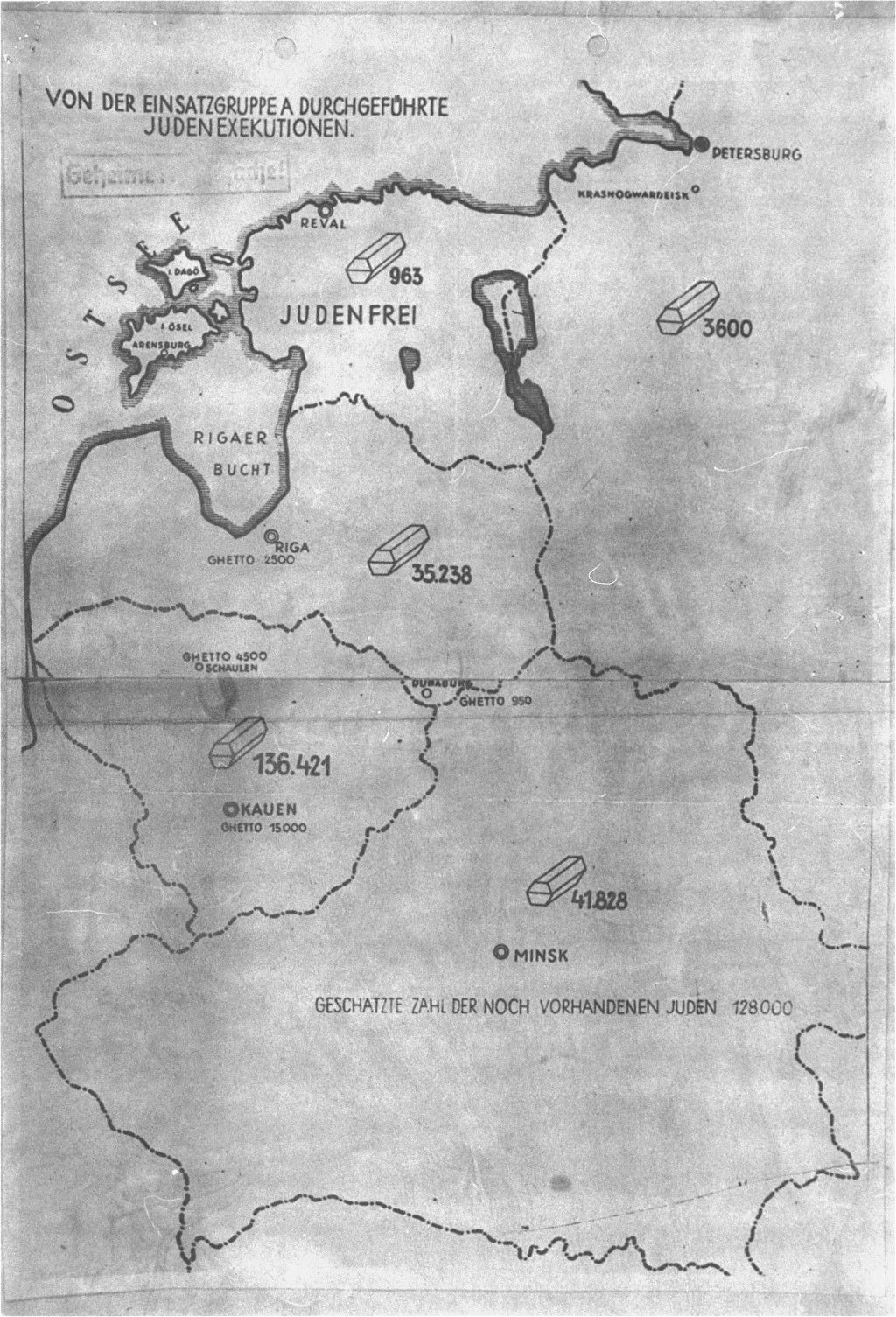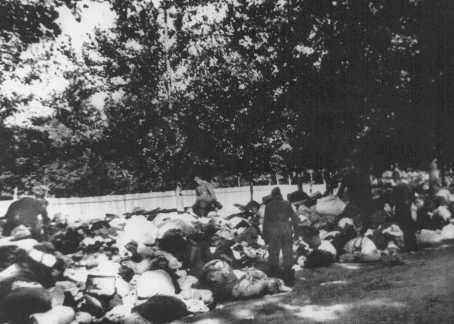
Einsatzgruppen: An Overview
The Einsatzgruppen (task forces, special action groups) were units of the Security Police and SD (the SS intelligence service) that followed the German army as it invaded and occupied countries in Europe. Often referred to as “mobile killing squads,” they are best known for their role in the systematic murder of Jews in mass shooting operations on Soviet territory.
Key Facts
-
1
The Einsatzgruppen were special units of the Security Police and SD assigned to execute security measures immediately behind German lines.
-
2
With the assistance of the Waffen SS, police units, the army, allied Romanian forces, and local collaborators, the Einsatzgruppen conducted mass shooting operations in the Soviet Union. The mass shootings targeted Jews, Roma (Gypsies), Communists, and Soviet civilians.
-
3
One third of all Jewish Holocaust victims died as a result of shooting actions. The Einsatzgruppen were key perpetrators of mass shootings.
From Security Measures to Mass Murder

Whenever Nazi Germany’s army marched into a country, Einsatzgruppen of the Security Police and SD (Sicherheistsdienst, the SS intelligence service) immediately followed to secure newly seized territory. Their tasks included identifying and neutralizing potential enemies of German rule, seizing important sites and preventing sabotage, and recruiting collaborators and establishing intelligence networks. When Germany attacked Poland in September 1939, the Einsatzgruppen also killed civilians perceived as enemies. Together with units of the Waffen SS, Order Police, and local collaborators, they shot thousands of Jews and tens of thousands of members of the Polish elites.
With the start of Hitler’s “war of annihilation” against the Soviet Union in June 1941, the scale of Einsatzgruppen mass murder operations vastly increased. The main targets were Communist Party and Soviet state officials, Roma, and above all Jews of any age or gender. Under the cover of war and using the pretext of military necessity, the Einsatzgruppen organized and helped to carry out the shooting of more than half a million people, the vast majority of them Jews, in the first nine months of the war.
The 3,000 personnel of all four Einsatzgruppen did not conduct these killings alone. Units of the Waffen SS, Order Police, Wehrmacht, allied Romanian forces and local collaborators aided them. The latter helped to identify victims as well as kill them. Many of the killers and victims knew one another as neighbors and colleagues. For example, over two days in September 1941, a small detachment of Einsatzgruppe C along with larger units of Waffen SS, Order Police and Ukrainian auxiliaries conducted a mass shooting of Jews in Babyn Yar (Babi Yar), a ravine outside Kyiv (Kiev). According to reports sent to the Einsatzgruppen headquarters in Berlin, 33,771 Jews were massacred during this two-day period. When occupied territories came under civilian control, stationary offices of the SS and Police replaced the Einsatzgruppen and continued to conduct mass shootings.
Often referred to as an Aktion, a massacre typically began when Jews and other victims were rounded up or ordered to report to a central destination. The victims were then marched or transported to the killing site. If a mass grave had not already been dug, the victims were forced to dig one. They were stripped of clothes and valuables and driven in groups to the pit. The Einsatzgruppen and their assistants either shot the victims at the edge so that they fell in, or forced them into the grave to be shot. Friends and families often had to watch their loved ones die before them.
A New Mass Murder Method
The mass shootings were resource-intensive, requiring many shooters and escort guards as well as guns, ammunition, and transport. Concerns about the inefficiency of the shootings and their psychological impact on the shooters led to the development of special vans outfitted with engines that pumped carbon monoxide into sealed passenger compartments. Jews were packed into the compartments, then driven to a mass grave, asphyxiating during the journey.
It took much longer to kill very large groups of victims with the gas vans, however. Einsatzgruppen personnel were required to remove bodies and clean the compartments. Throughout the German occupation of seized Soviet territories, mass shootings continued to be the preferred method of murdering Jews. At least 1.5 million and possibly more than 2 million Holocaust victims died in mass shootings or gas vans in Soviet territory.
Critical Thinking Questions
What pressures and motivations may have affected these soldiers to volunteer for the Einsatzgruppen and later murder innocent civilians?
Investigate what penalties there may have been for refusing to shoot Jews.
Paramilitaries are often involved in mass atrocity. Why is that the case?

